Japan, the land of the rising sun, has long fascinated us with its unique combination of traditional culture and modern progress, breathtaking landscapes, and extraordinary wildlife. This February, the time has finally come for us to immerse ourselves in Japan's rich history, impressive nature, and delicious cuisine.
Good to know before traveling
Payment by SUICA Card
Many means of transportation such as buses or subways can only be paid for with a so-called SUICA card. The SUICA card is a contactless smart card that is widely used in Japan and allows users to pay quickly and conveniently on trains, buses, subways, and even at some stores. The SUICA card works simply by approaching a reader, without the need to physically insert it into a reader. This makes the payment process fast and efficient. In addition to public transport, the SUICA card can also be used for purchases in stores that support the IC card system. It can also be used for some vending machine purchases, such as drinks or snacks at vending machines. The SUICA card is reloadable, which means that users can load money onto the card to pay for purchases, making it a convenient and popular payment method for Japanese people as well as commuters and travelers in Japan.
The problem is that the physical card was originally available everywhere, but is now only available at the airport. We only realized this when we were already in the city and were reluctant to go back to the airport, which annoyed us for the first time. But then we discovered that the SUICA Card for iPhone users is also available as a digital card in Apple Wallet, which also makes topping up very easy.
You can save a lot of space and weight in your suitcase with hygiene products
Before a trip, we often go shopping again to buy hygiene products that are suitable for traveling. Be it shampoo and shower gel in smaller formats, small toothpaste, disposable razors, etc. We didn't need any of these things when we were there, as they were available in every hotel, vacation apartment, and other places. Even in hostels! We still preferred our own toothbrush, hairbrush, etc., also in terms of sustainability, so as not to waste too much disposable plastic, but we were happy to use shampoo and shower gel in particular, which was usually available in large bottles in the showers. If we had known that, we would have saved a lot of weight!
Arrival in Tokyo
We start our three-week trip in Tokyo, full of anticipation for the adventures that await us. If we had known this beforehand, we would have applied for a SUICA Card here, but we managed very well with the digital one. In Tokyo, we get over our jet lag, gain a first impression of Japan, and take care of organizational matters. We will be traveling through Japan for three weeks by train and have already ordered the Japan Railway Pass in advance in Germany. Unfortunately, you can't buy it on the spot, you have to order it before you travel. The Japan Railway Pass (JR Pass) is a relaxed way to explore Japan and travel on the trains of Japan Railways and its partners. Upon arrival in Japan, the JR Pass must be activated at one of the JR Pass activation counters, for which we need the passport and the voucher for the JR Pass.
Info about JR Pass
Here is a guide on how to obtain and use the JR Pass in Japan.
- Buying the JR Passes: The JR Pass must be ordered online before entering Japan and the voucher will then be sent to your home within four days. There are different types of passports, depending on the length of stay and travel requirements. As we were running late again, we didn't have enough time to have the passport sent to us and we had it sent to our hotel in Tokyo - it worked perfectly.
- Activating the JR Passes: Upon arrival in Japan, the JR Pass must be activated at one of the JR Pass activation counters. You will need your passport and the voucher for the JR Pass. It is best to activate the JR Pass at the airport so that you can use it for the journey from the airport to the city.
- Using the JR Passes: Once the JR Pass is activated, it can be used to travel on JR trains. The pass allows free or discounted travel on most JR lines, including Shinkansen trains (with the exception of certain express trains such as the Nozomi and Mizuho Shinkansen).
- Reservation: It is advisable to make seat reservations for the Shinkansen trains, especially during peak travel times. You can do this at the JR stations. This was a bit annoying for us, as we like to travel spontaneously and often didn't know the day before where our journey would take us next. Unfortunately, it is also not possible to book online.
- Using the JR Pass at the platform: At the platform, you must have your JR Pass and passport ready to show when you are checked by an employee.
- Using the Pass in different local transport: The JR Pass can also be used on certain JR buses, ferries, and even some private train lines, but not on subways or non-JR buses. It is best to check this online beforehand.
But is the JR Pass even worth it?
Until 2023, the JR Pass cost around €350 for three weeks. In February 2024, we paid almost double that, namely €630 per person. We therefore thought long and hard about whether it was really worth it, but as we didn't have an itinerary before the trip, we couldn't check. We then opted for the pass as we assumed that we would be able to visit several places and that it would be easier to organize. We definitely used the pass extensively, didn't spend more than three days in any one place, and always used the lines for which the JR Pass was valid within the cities. From a purely financial point of view, it still didn't pay off and if we had paid for everything individually, we would have paid less. But if we hadn't had the pass, we would have asked ourselves before each new trip whether it was necessary to go there and we might have seen less of Japan. In addition, in most cases, there was no need to organize a ticket, as we already had the ticket in the form of a pass. Looking back, we probably wouldn't choose the JR Pass again for the price, but we don't regret using it.
Once everything has been organized, we start our first sightseeing tours in Tokyo: we visit our first temples and shrines in the first two days.
The Hie Shrine
The Hie Shrine (Hie Jinja) is within walking distance of our hotel and will therefore be the first one we visit. It is an important Shinto shrine in the Nagatacho district of Chiyoda. It was founded in 1478 and was a central place for prayers and ceremonies during the Tokugawa shogunate. The current main building was rebuilt in 1958 after the Second World War and is an impressive example of modern Shinto architecture. The shrine is known for its annual festival, the Sannō Matsuri in June, with colorful processions and traditional dances. The picturesque gardens offer a retreat from the bustling city center of Tokyo.
Unfortunately, it rains during our visit and we skip our visit to the garden. The shrine is reached via a staircase lined with many red torii, but the torii are already a great photo opportunity.
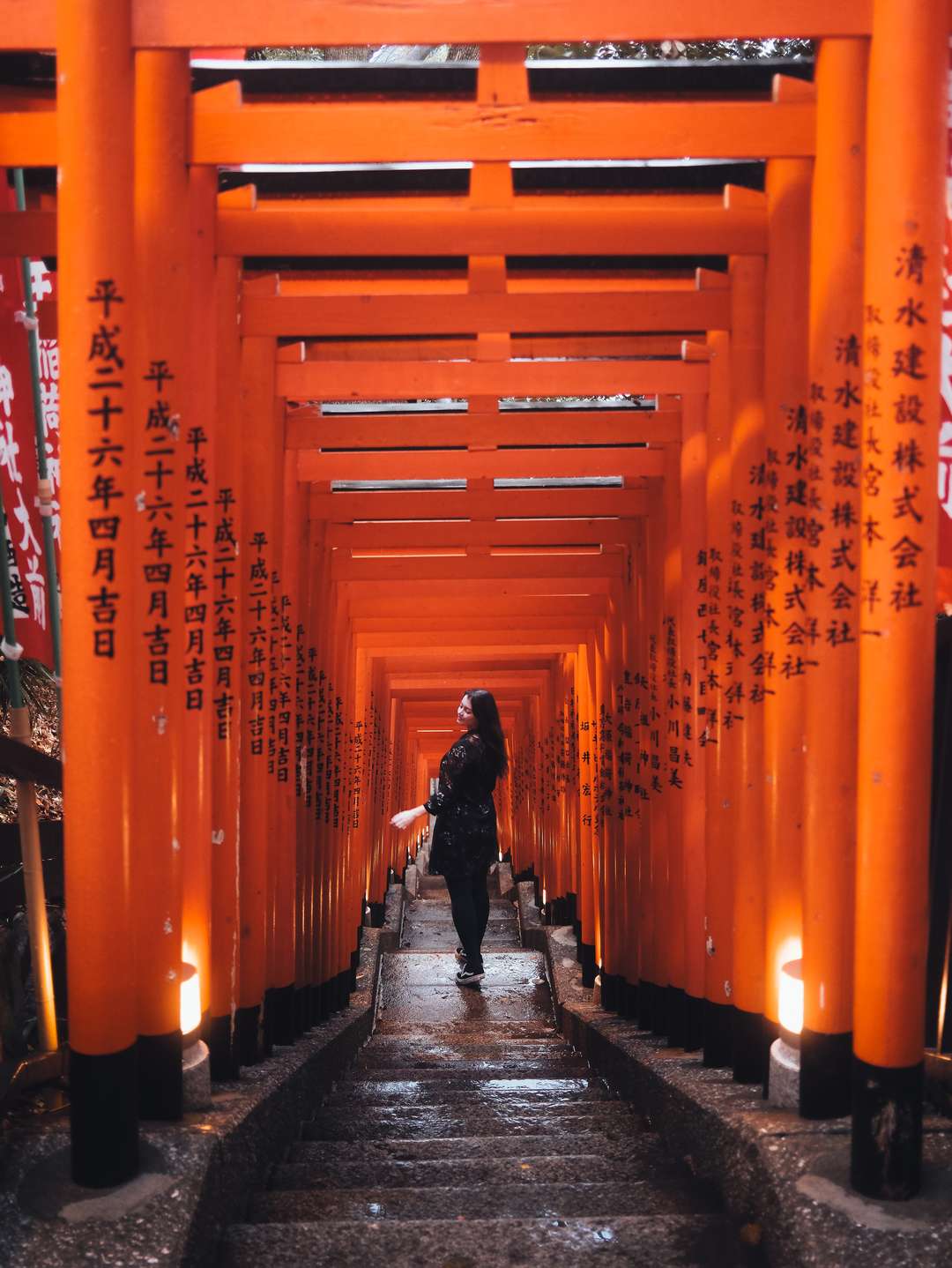
Get the exact geo-position for this spot: Hie Shrine, Tokyo
Meiji Shrine
Next, we visit Meiji Shrine, one of the most famous shrines in Japan, and even see some priests. Built in honor of Emperor Meiji and Empress Shōken, it is an important place of worship and contemplation. Completed in 1920, it is located in a vast wooded area in Shibuya and offers peace and contemplation. The shrine is known for ceremonies including the Harai and Ema rites, as well as its magnificent torii, which marks the transition from the city to sacred silence. It is also home to a collection of cultural artifacts that reflect Japan's rich history. Visitors experience not only spiritual worship but also the beauty and peace of the forest, making Meiji Shrine an inspiring and touching place for locals and travelers alike.
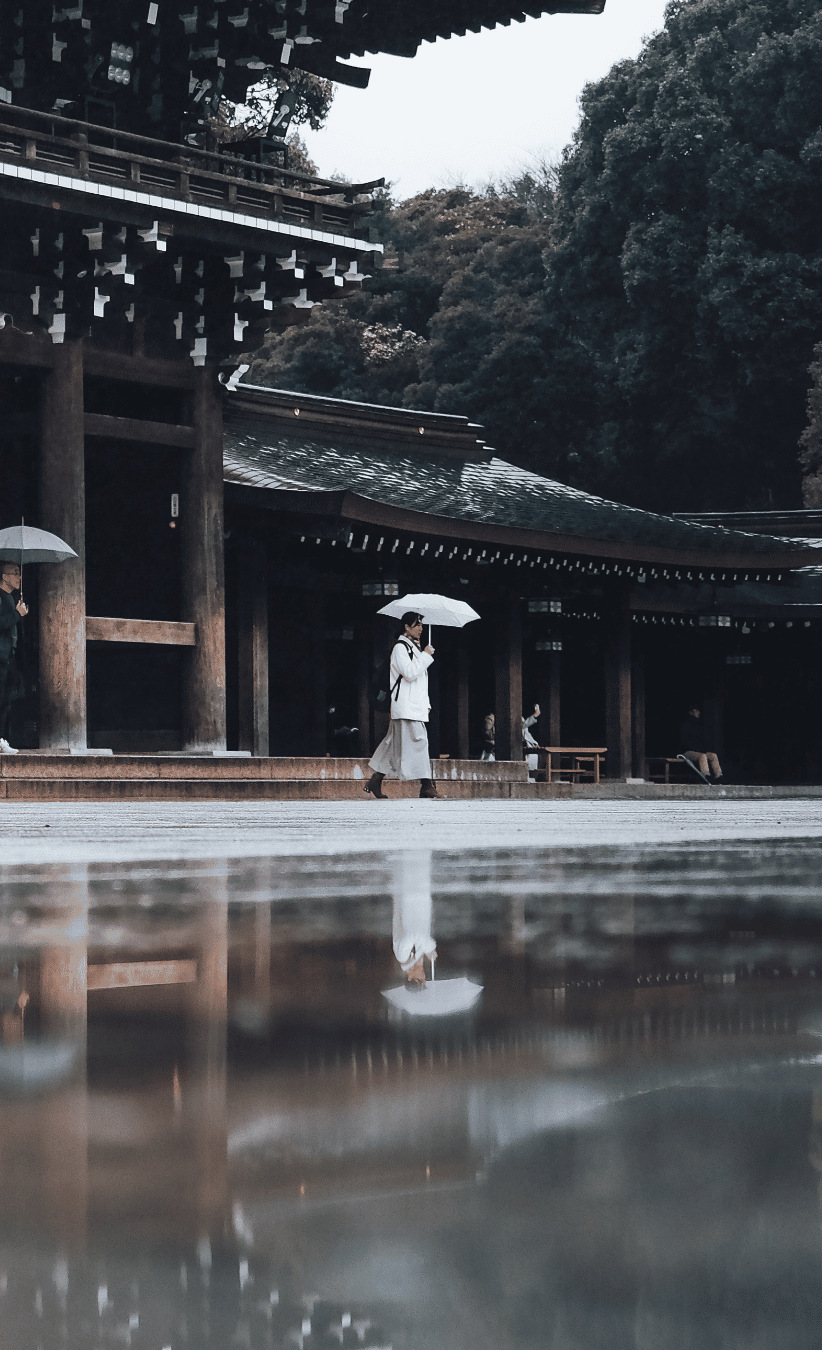
Get the exact geo-position for this spot: Meiji Shrine, Tokyo
Toyosu-Markt
In the afternoon, we stroll through Toyosu Market, a modern fish market in Tokyo that replaced the historic Tsukiji Fish Market in 2018. With state-of-the-art facilities and technology, Toyosu Market provides a hygienic and efficient environment for trading fresh fish and seafood. Visitors can watch the auctions, buy fresh produce, and explore Japan's diverse cuisine.
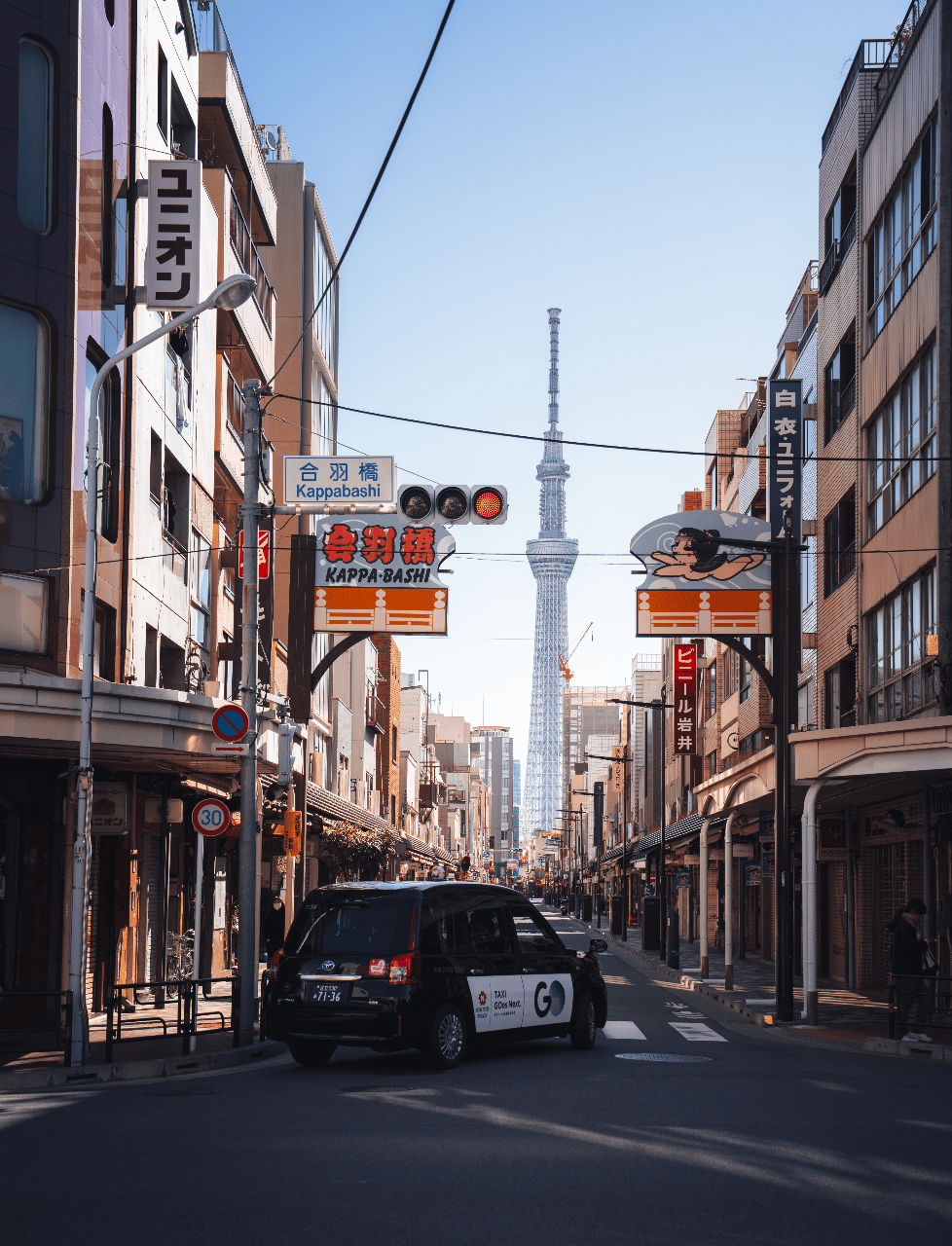
Get the exact geo-position for this spot: Kappabashi Street, Tokyo
In the evening, we experience the first big city hustle and bustle in the Harajuku district. Harajuku is a lively and diverse district in the city center, known for its vibrant street culture and cosmopolitan atmosphere. The district stretches along Omotesando Avenue and Takeshita Street and is a popular destination for locals and tourists alike. One of the most striking features of Harajuku is its avant-garde fashion and subculture. The district is a melting pot of different styles, from kawaii (cute) and lolita to punk and gothic. The fashion stores along Takeshita Street offer a wealth of trendy clothing, accessories, and cosmetic products that are appreciated by young people from all over the world. In addition, Harajuku is also a center for street art, music, and alternative culture. The streets are lined with cafés, galleries, and live music venues, creating a vibrant atmosphere and attracting creative minds from all corners of the city. On weekends, numerous street artists and performers also gather in the streets of Harajuku to showcase their talents and entertain passers-by. The vibrancy of the district is super photogenic and it was fun to take photos here and capture the exciting atmosphere.
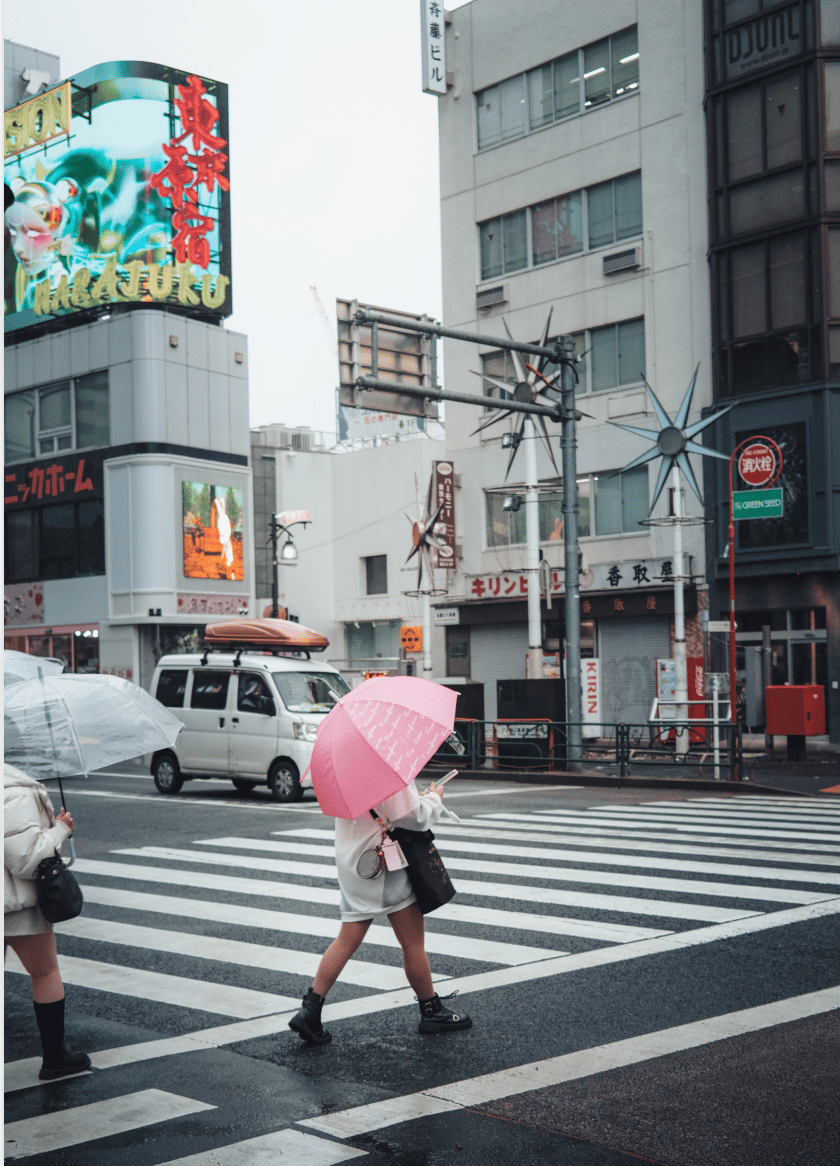
Get the exact geo-position for this spot: Harajuku Street, Tokyo
Experience Shibuya Crossing from above
The Shibuya Crossing is definitely a highlight in Tokyo. Not only to be part of the thousands of people crossing what is probably the most famous crosswalk at the same time but also to watch the action from above.
How to get a view of the Shibuya Crossing:
- When you come out of the metro, you will be looking directly at the intersection. On the right-hand side, you will see a huge sign with the name "Magnet Bar"
- Enter the building and take the escalator until you can go no further
- Take the elevator the rest of the way to the top
- You arrive directly at the entrance to the Magnet Bar
- 1500 YEN is the entrance fee and a drink is included
- Enjoy your drink with a view of Shibuya Crossing
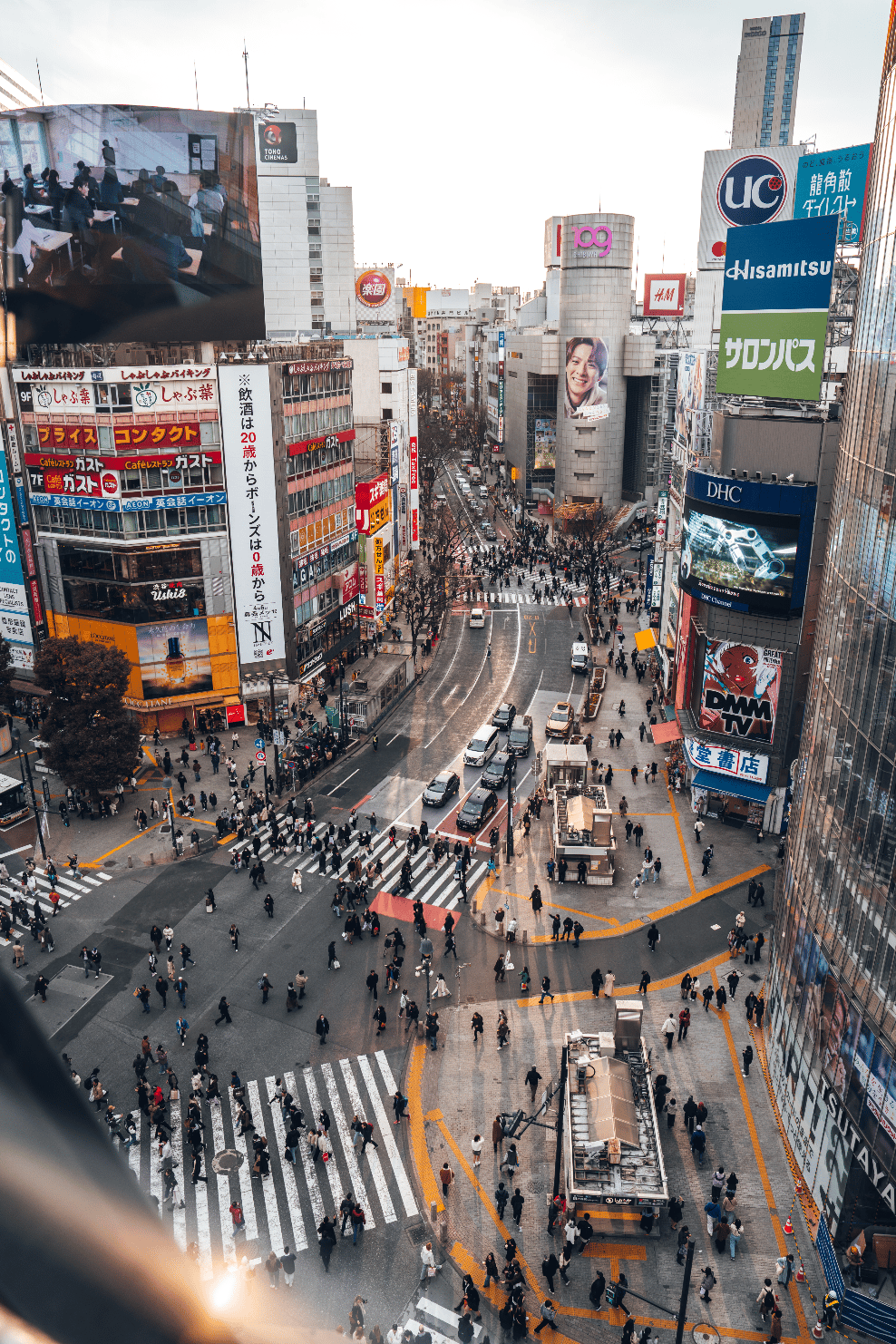
Get the exact geo-position for this spot: View from Magnet Bar Shibuya, Tokyo
Visit to the snow monkeys in Yamanochi
Our second stop is Yamanochi. We take a 1.5-hour train ride to Nagano and from there another hour by bus to fulfill a big wish: we want to watch the snow monkeys bathing in the hot springs in Jigokudani Yaen-Koen Park. They only do this in winter when it is very cold outside to warm up. Even though it wasn't too far from Tokyo, the difference in temperature is clearly noticeable as the park is quite high. When we arrive in the village, we first unload our luggage in our traditional accommodation and then walk to the park where the snow monkeys bathe. Admission costs around five euros per person and we walk about two kilometers through the snow-covered forest until we reach the springs. And there they are: a whole family of snow monkeys warming up in the warm water, playing, wrestling with each other, or just relaxing with their eyes closed. A dreamlike sight that we very much wanted to see. After two hours of tense watching and frozen toes, the park closes and we walk back to our traditional accommodation, where we can also warm up in a hot onsen.
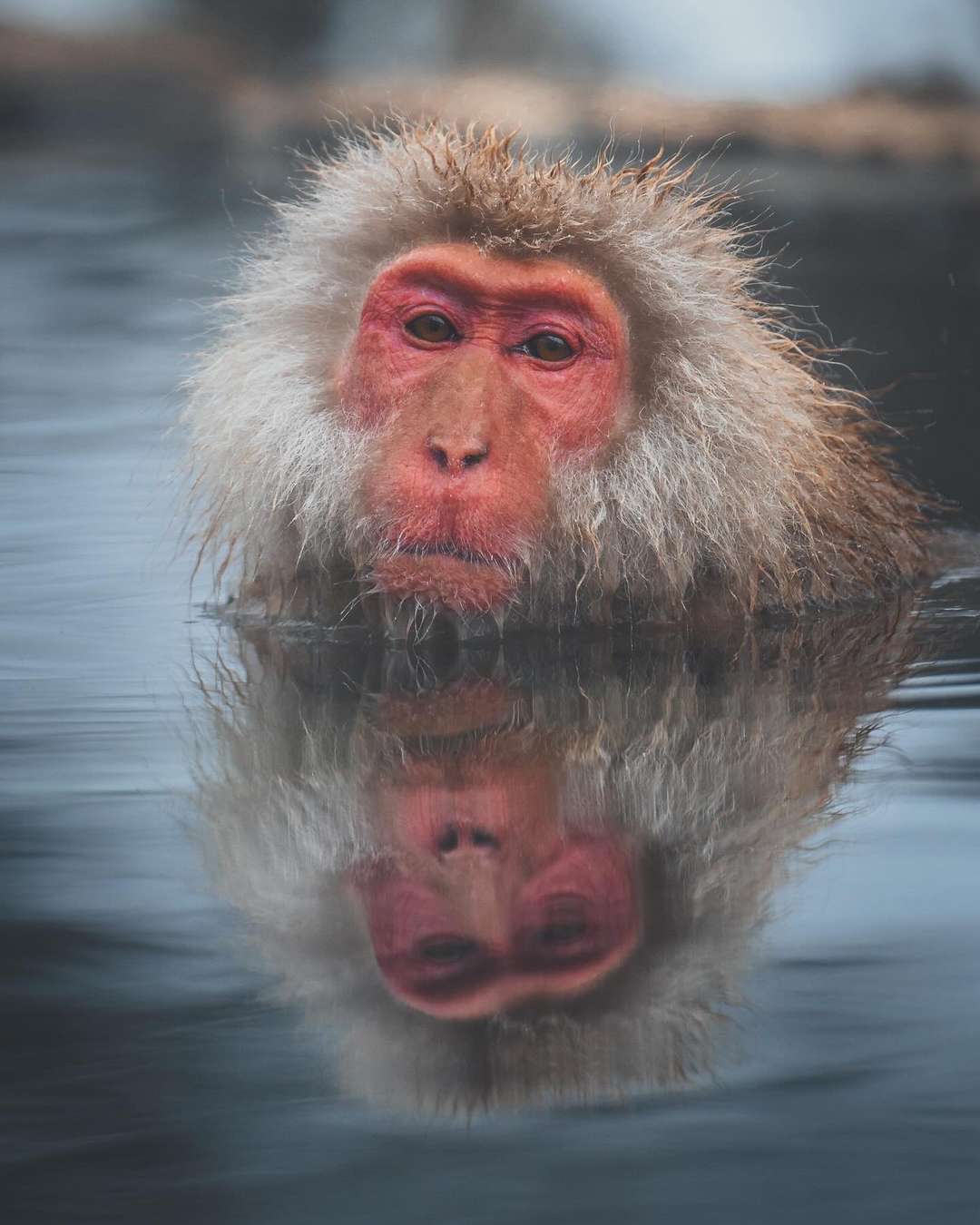
Get the exact geo-position for this spot: Snow Monkey Park near Nagano
Three days in Kyoto
As it is really cold up in Yamanochi, we leave the next morning. We take the bus back to Nagano and from there the train, which is included in our JR Pass, to Kyoto. In total, we spent about 7 hours traveling from hotel to hotel and changing trains three times, but it was all very relaxed with our backpacks. Kyoto is known for its historic temples, shrines, and traditional wooden houses, and is said to offer a fascinating mix of ancient and modern culture, which we want to experience for ourselves. The well-preserved temples, shrines, and historic districts fascinated us, and we enjoyed strolling through the traditional alleyways and soaking up the atmosphere of the city. Our highlights over the next few days are the Fushimi Inari Shrine, the Otagi Nenbutsu-ji Temple, and the Sagaosawacho Temple. We were also fascinated by the Nishiki Market with its variety of food. However, as the city is very crowded and you are surrounded by lots of people everywhere, three days in Kyoto are enough for us. So we pack our rucksacks and move on. But from the beginning:
Kyotos oldtown Higashiyama
After checking in Kyoto and stowing our luggage, we walk through the city, look for something to eat, and discover the beautiful Higashiyama-ku district at night. Here you will also find the famous Yasaka Pagoda, which offers a very classic but beautiful photo motif of the city. In our opinion, the blue hour, when the pagoda is already illuminated but the sky is still slightly blue, is the best time to photograph the pagoda.
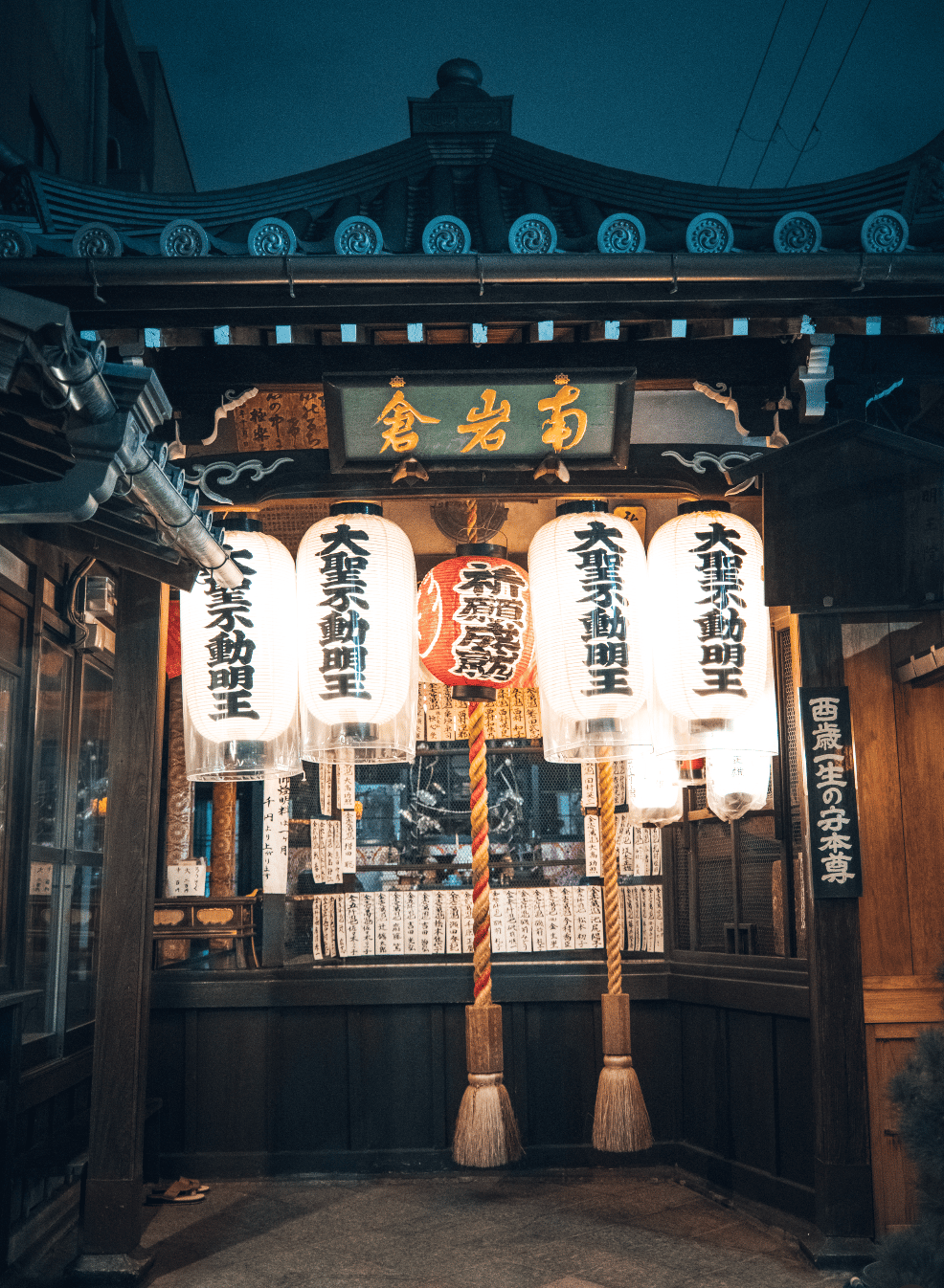
Get the exact geo-position for this spot: Shōrenzan Meiōin Fudōji Temple, Kyoto
Fushimi Inari Shrine
To escape the crowds a little, we get up very early the next morning to be at Fushimi Inari Shrine by sunrise. The Fushimi Inari Shrine is an iconic sight in Kyoto, known for its breathtaking Torii Avenue that stretches across a hill. The shrine is dedicated to the Shinto god Inari, the patron saint of rice, prosperity, and business success. Visitors can walk through thousands of orange torii gates donated by donors, creating a picturesque backdrop. The shrine and its surrounding trails also offer a unique insight into Japanese culture and spirituality, as well as spectacular views of Kyoto city. We hiked through the thousands of torii up to the top of Mount Inari, past various buildings of the temple and the many fox statues. When we arrive back down at the entrance at around 9:00 am, the crowds are already streaming towards us and we are very pleased with our decision to have come so early.

Get the exact geo-position for this spot: Mitsurugisha Shrine in Fushimi Inari, Kyoto
Nishiki Market
After a short lunch break at the hotel, we set off again to explore more of Kyoto and also want to experience its culinary diversity. To do this, we head to Nishiki Market.
Nishiki Market, also known as "Kyoto's Kitchen", is a lively and historic market in the heart of Kyoto and perfect for our plans. It stretches along a narrow, covered shopping street and is known for its variety of fresh produce, seafood, spices, sweets, and traditional snacks. For example, there are grilled baby octopuses, whole chicks on skewers, and various fish specialties, but we prefer to try matcha beer, tea ice cream, and soybean tea. The market also has a lot to offer in terms of photography and it's great fun to let off steam with the camera.
Otagi Nenbutsu-ji Tempel
Otagi Nenbutsu-ji is a unique Buddhist temple located outside the center in the western part of Kyoto. It is known for its unusual and charming stone statues, known as Nenbutsu, which show a variety of facial expressions and emotions.
The temple was founded in the 8th century, but most of the stone figures were only donated in the 1980s by visitors and worshippers who came to learn the art of stone carving. Each figure has its own unique personality and expression. We found this place very photogenic, also because it is very special and unique. When we were there, it was rainy and foggy, which gave it a more mystical atmosphere, which we really liked.
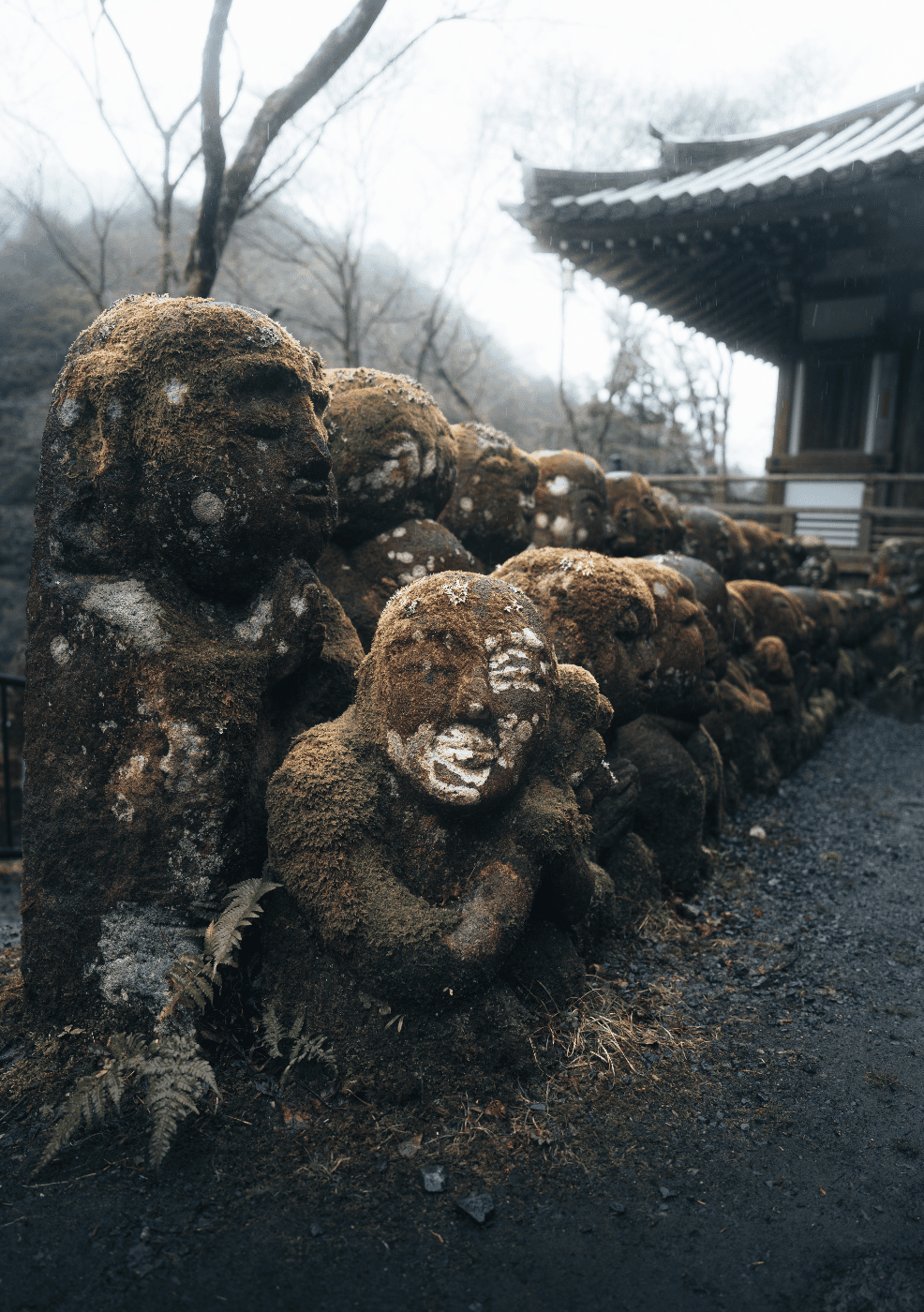
Get the exact geo-position for this spot: Otagi Nenbutsu-Ji Temple, Kyoto
Daikaku-ji
Otagi-Nenbutsu-ji is not far from Daikaku-ji Temple. Just a short bus ride and a short walk through Kyoto's residential areas and we are there. Daikaku-ji was originally built as a palace in the 9th century and later converted into a Buddhist temple. Its location on the banks of Osawa Pond gives it a tranquil atmosphere and offers a great photo opportunity when the temple is reflected in the pond.

Get the exact geo-position for this spot: Daikaku-ji Temple, Kyoto
Daikaku-ji is famous for its picturesque garden, known as the "Osawa Pond Garden". Here we experience the first blooming cherry blossoms on our trip to Japan. There is also a bamboo forest here which, unlike the famous Arashiyama, has hardly any visitors and we can enjoy it completely in peace.
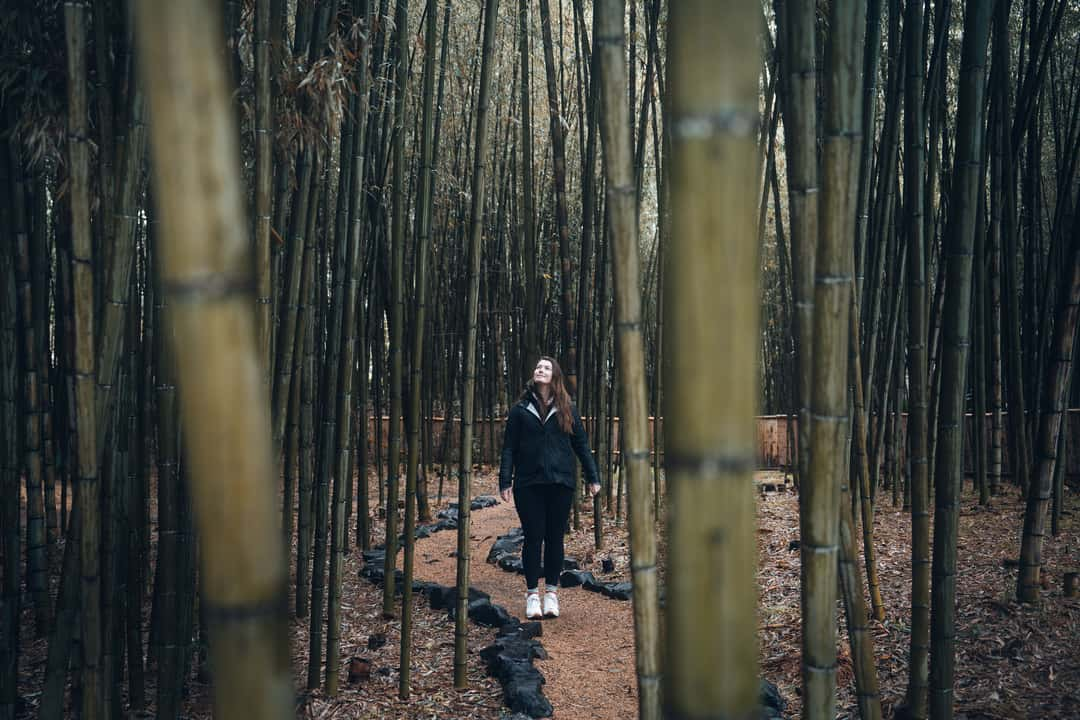
Get the exact geo-position for this spot: Bamboo Forest in Daikaku-ji Temple, Kyoto
To round off the day, we head back to Kyoto's old town and warm up with a delicious portion of ramen. Afterward, we stroll through the alleyways and bid a satisfied farewell to Kyoto.
To the coast to Nachikatsuura
Our next stop is Nachikatsuura. Again, we take the train, which is mostly covered by the JR Pass, and takes about five hours from Kyoto, including one change in Nagoya. In Nachikatsuura, we want to spend two days visiting the picturesque Kumano Nachisan shrines and enjoying the natural beauty of the region. As the place is hardly known, especially among foreign tourists, and it is not a tourist season in Japan at the moment, the place is relatively deserted. So we first checked into our hotel, which is another traditional ryokan with onsen. The hotel room alone with its view of the bay is very photogenic, as it shows the age-old tradition of Japan as we know it from historical films. As it is already late in the afternoon and we don't want to go to our actual destination until the next morning, we take the time to bathe in the hotel's traditional onsen.
Rules of conduct in onsen
In Japanese onsen, the traditional hot springs, there are certain rules of conduct that are important to respect the culture and ensure a pleasant experience for everyone. By following the following rules of conduct, you can enjoy a pleasant and respectful onsen experience while respecting the culture and traditions of Japan.
- Thorough cleaning: Before entering the onsen, you must wash and shower thoroughly to cleanse your body. This is done in the designated shower areas outside the baths.
- No Clothing: People bathe naked in the onsen. It is important not to wear swimwear to ensure a hygienic environment. Men and women are separated for this purpose
- Use towel: A small towel can be used to discreetly cover yourself when moving around outside the pools. However, it should not be immersed in the water.
- Tie Hair: People with long hair should tie their hair or put it up to prevent it from getting into the water.
- Stay calm: Onsen is a place of relaxation and tranquillity. Loud talking, frolicking, or other disruptive behavior is inappropriate.
- Respect in front of others: Respect the privacy and space of other bathers. Avoid staring at others or taking photos of them.
- Do not get drunk: It is not acceptable to enter an onsen drunk. Alcohol consumption before or during the bath is inappropriate.
- No soap in water: Soap or shampoo must not be used in the pools. They are only used for cleaning before bathing.
- Switch off phones: Out of respect for the atmosphere and other bathers, cell phones should remain switched off in the onsen area.
Seiganto-ji Temple
The next morning we got up very early again to catch the first bus at 6:20 to Seiganto-ji Temple. To our delightful surprise, we realize that we are so far outside the typical travel time that we can spend two hours photographing the temple all to ourselves. The sight of the red pagoda with the Nachi waterfall in the background is the only reason why we took the ten-hour detour from Kyoto to Osaka, but it was definitely worth it.
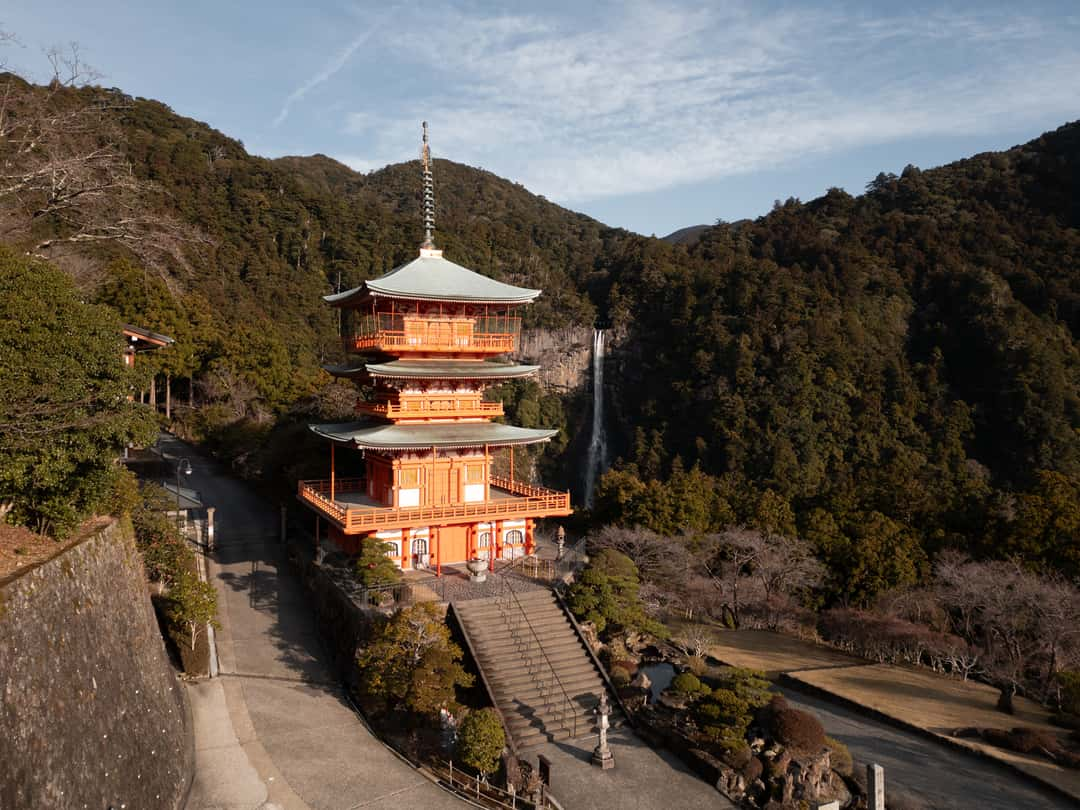
Get the exact geo-position for this spot: Seiganto Ji Temple
Afterward, we visit the Kumano Nachi-Taisha temple complex, which is almost as impressive as the Seiganto-ji temple. We particularly like the red torii, which is open to the mountains in the background.
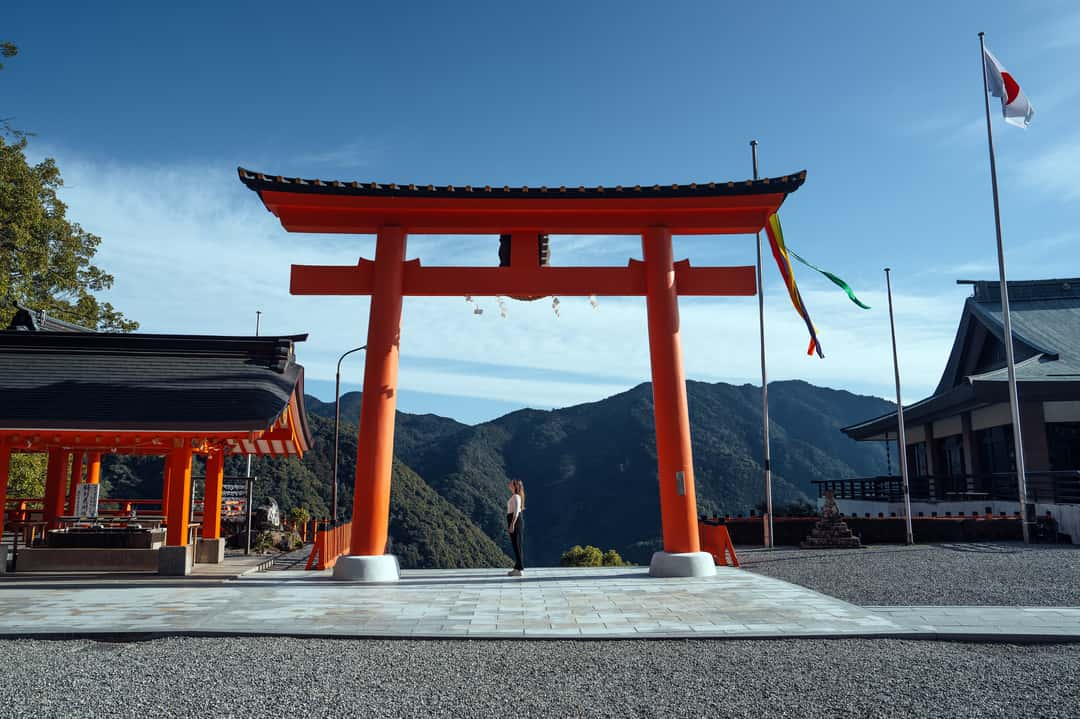
Get the exact geo-position for this spot: Kumano Nachi-Taisha
Tuna Market
We have something special planned for the morning of our departure: on our arrival in Nachikatsuura, we learned that the largest tuna market in Japan is located here. We didn't want to miss out on this and arrived at the harbor at 7 a.m. that morning to see and photograph the fishing boats arriving. It is totally impressive to see so much tuna at once and to experience the process of the fish being weighed, measured and then negotiated.

Get the exact geo-position for this spot: Tuna Fish Market
Three days in Osaka
The journey continued to Osaka. Fortunately, there is a direct train from Nachikatsuura, which is also covered by the JR Pass and takes about four hours. Then we have to take the metro again and walk ten minutes through Dotonbori before we arrive at our small apartment for the next few days. In Osaka, we immerse ourselves in the vibrant city life and sample the delicious local cuisine. The mix of old and new in this city is fascinating, and we enjoy discovering the contrasts.
Center of Dotonbori
Dotonbori is a lively district in the center of Osaka, Japan, known for its vibrant atmosphere, exciting nightlife, and gastronomic diversity. The district stretches along the canal of the same name and is lined with glowing neon lights, impressive billboards, and an abundance of restaurants, bars, stores, and entertainment venues. The numerous restaurants, food stalls and street food stands offer a wealth of options to suit all tastes and budgets.
Besides food, Dotonbori also offers a wide range of entertainment options, including karaoke bars, arcades, theaters, and live music venues. The streets are lively and full of energy, especially in the evening when the neon lights transform the scenery into a kaleidoscopic play of colors.
Daytrip to Nara Deer Park
From Osaka, we take a day trip to Japan's first capital city. Here we visit the many deer that live freely here and are happy to be fed by visitors. Of course, this makes them great photo subjects, especially when combined with the old buildings and ruins of the temples in the park. The trip to Nara is also included in the JR Pass.
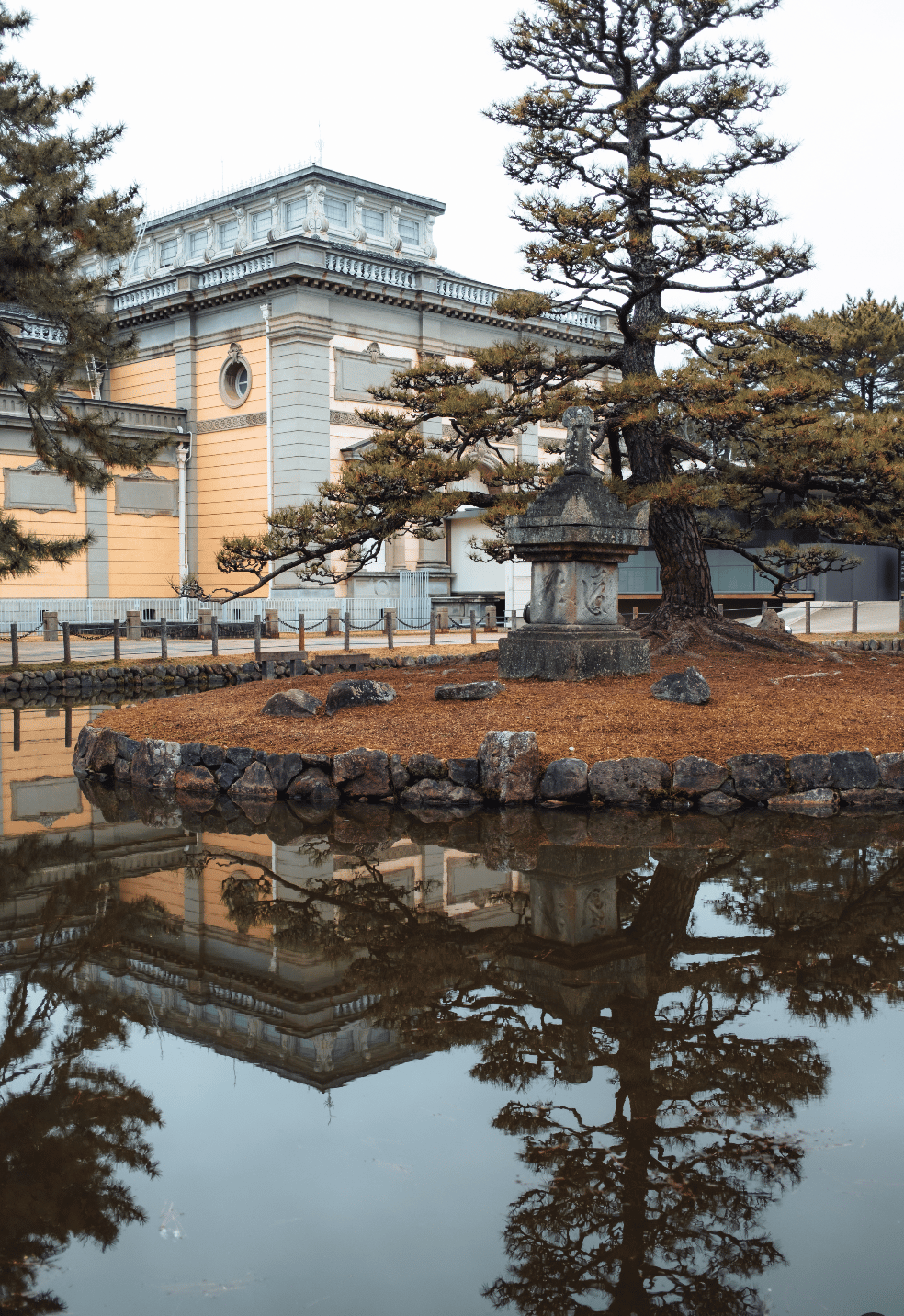
Get the exact geo-position for this spot: Nara National Museum
Shinsaibashi-Suji
On the way back from Nara, we visit the Shinsaibashi Suji shopping street. It is one of the oldest shopping streets in Japan. Here visitors will find an abundance of stores selling everything from clothing, shoes, and accessories to electronics, souvenirs, and local specialties. The variety of stores ranges from international brand boutiques to traditional craft stores and modern department stores. The streets are lively both during the day and at night, offering a vibrant atmosphere that invites visitors to experience and enjoy Osaka's nightlife.
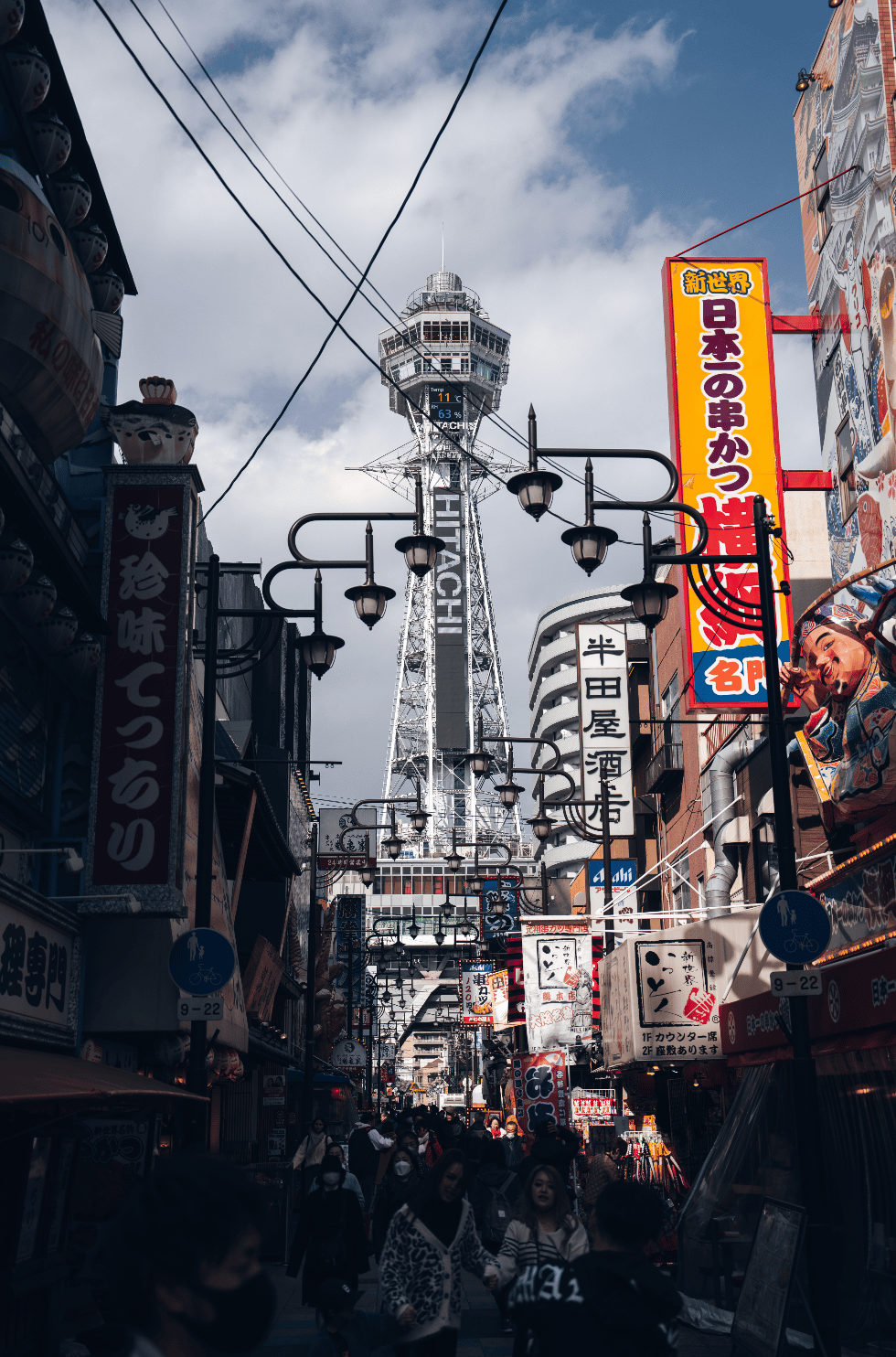
Get the exact geo-position for this spot: Shinsaibashi, Osaka
Osaka Castle
We have planned another highlight for the third day, a visit to Osaka Castle, an important historical sight in Osaka. The castle was built in the 16th century and played an important role in Japanese history, particularly during the Sengoku (Warring States) period. The imposing castle with its striking towers and high walls stands on a hill and offers an impressive view of the surrounding city. Inside the castle are exhibitions and museums that illustrate the history of Osaka and the castle itself. Visitors can admire historical artifacts, weapons, and armor as well as learn about the castle's former use and its role in Japanese history.
The gardens around Osaka Castle also had a special surprise in store for us: the first cherry blossoms have already started to bloom here.
After three days, the many colorful lights and vivid impressions of the city were enough for us and we continued our journey west to Hiroshima.
Experience the dark history and beautiful islands in Hiroshima
We will spend the next few days exploring Hiroshima. Hiroshima, known for its moving history, cultural diversity, and extraordinary resilience, is a place that touches us with its fascination and remembrance in equal measure. Known as the place where the world's first A-bomb exploded, we want to commemorate the victims and educate ourselves. Here we immerse ourselves in the history and beauty of this city, which despite its tragic past has shaped an inspiring present and future.
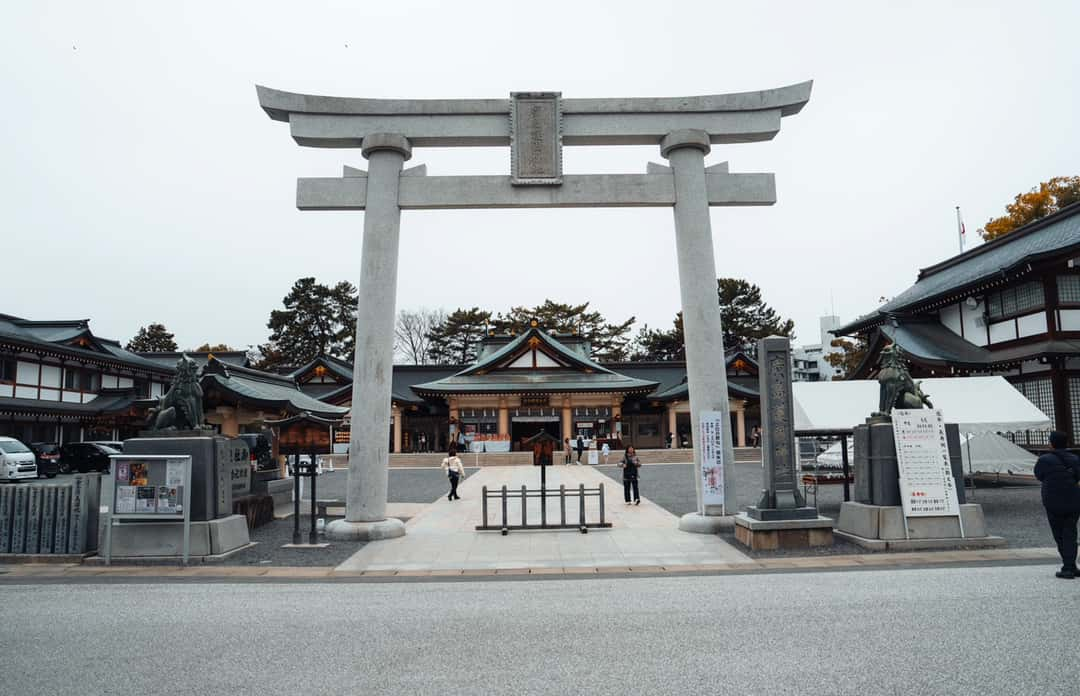
Get the exact geo-position for this spot: Hiroshima Gokoku Shrine
Hiroshima Peace Memorial Museum
At the top of our Hiroshima list was, of course, the Hiroshima Peace Memorial Museum, a moving memorial and museum dedicated to the memory of the victims of the atomic bomb that struck the city on August 6, 1945. The museum is located in Hiroshima Peace Memorial Park, in the immediate vicinity of Ground Zero of the atomic bomb explosion. The museum offers a powerful account of the events of the day the bomb was dropped and the impact on the city and its inhabitants. It contains a variety of artifacts, photographs, and personal items documenting the destruction and suffering of the people of Hiroshima.
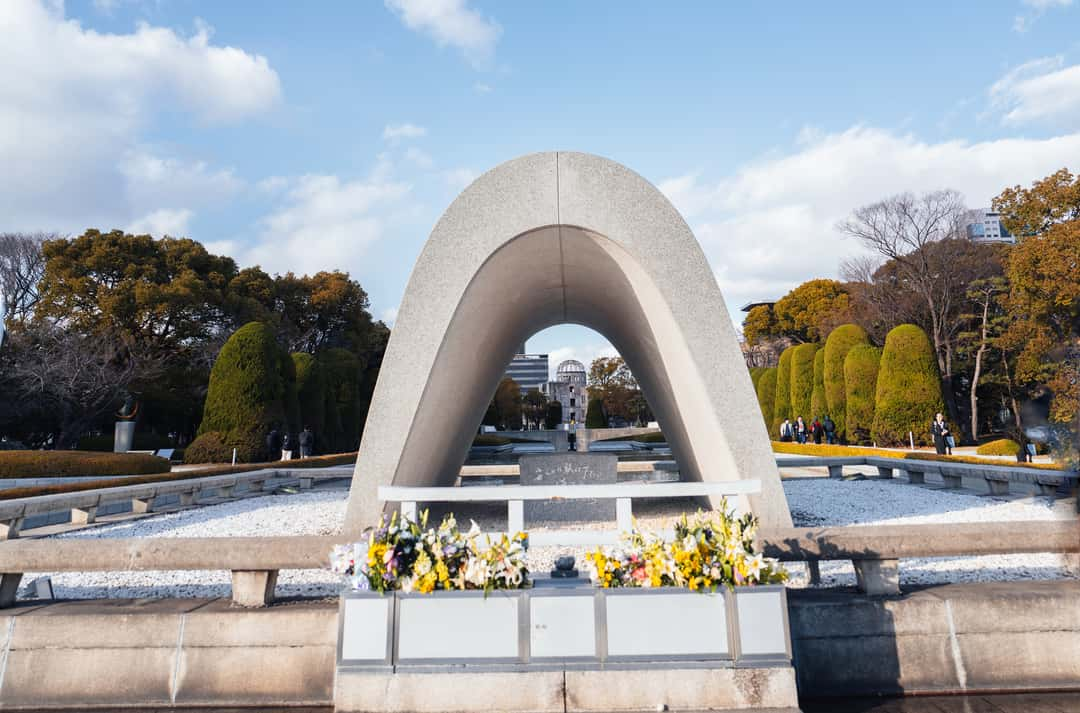
Get the exact geo-position for this spot: Hiroshima Peace Memorial
The Hiroshima Peace Memorial Museum is not only a memorial to the past but also a reminder for the future. It reminds us never to forget the horrors of war and to continue to work for a world of peace, reconciliation, and nuclear disarmament. A visit to the museum is a deeply moving and thought-provoking experience that every visitor will never forget. For just 200 YEN per person, anyone coming to Hiroshima really should visit the museum.
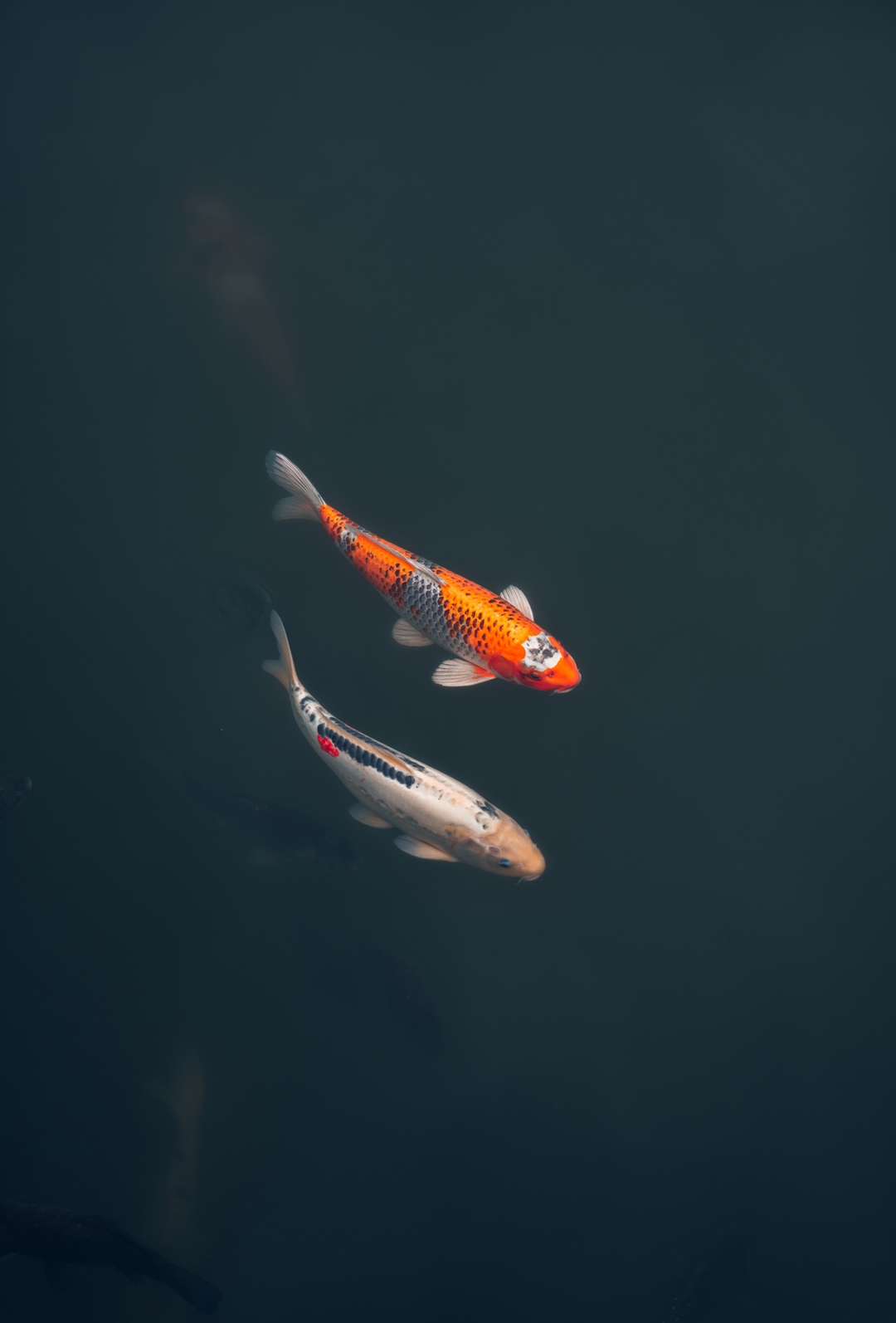
Get the exact geo-position for this spot: Kois of Hiroshima Castle, Hiroshima
The historical Island Miyajima
We use the next day for a visit to the island of Miyajima, also known as Itsukushima. The ferry to the island is included in the JR Pass. Miyajima is an enchanting island in Hiroshima Bay and is known for its iconic floating torii gate of Itsukushima Shrine, which appears to float in the water at high tide. The island is covered in dense forests and offers breathtaking views, especially from Mount Misen, the highest point on the island. The friendly deer that roam freely on Miyajima is a charming sight, as are the numerous temples, shrines, and historical sites that adorn the island. With its peaceful atmosphere, rich culture, and picturesque landscapes, Miyajima is a real treasure and we loved it.
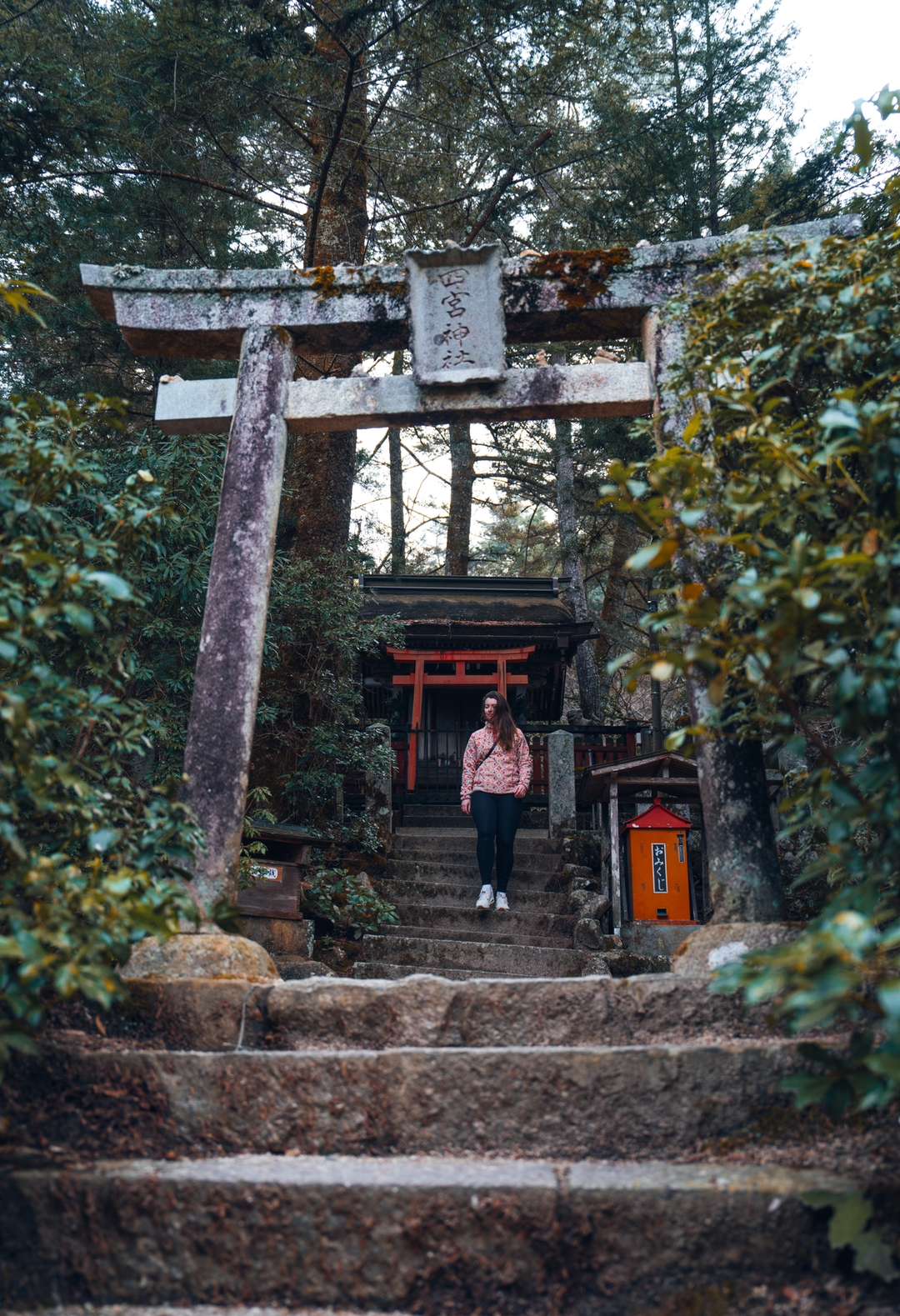
Get the exact geo-position for this spot: Shinomiya Shrine, Miyajima
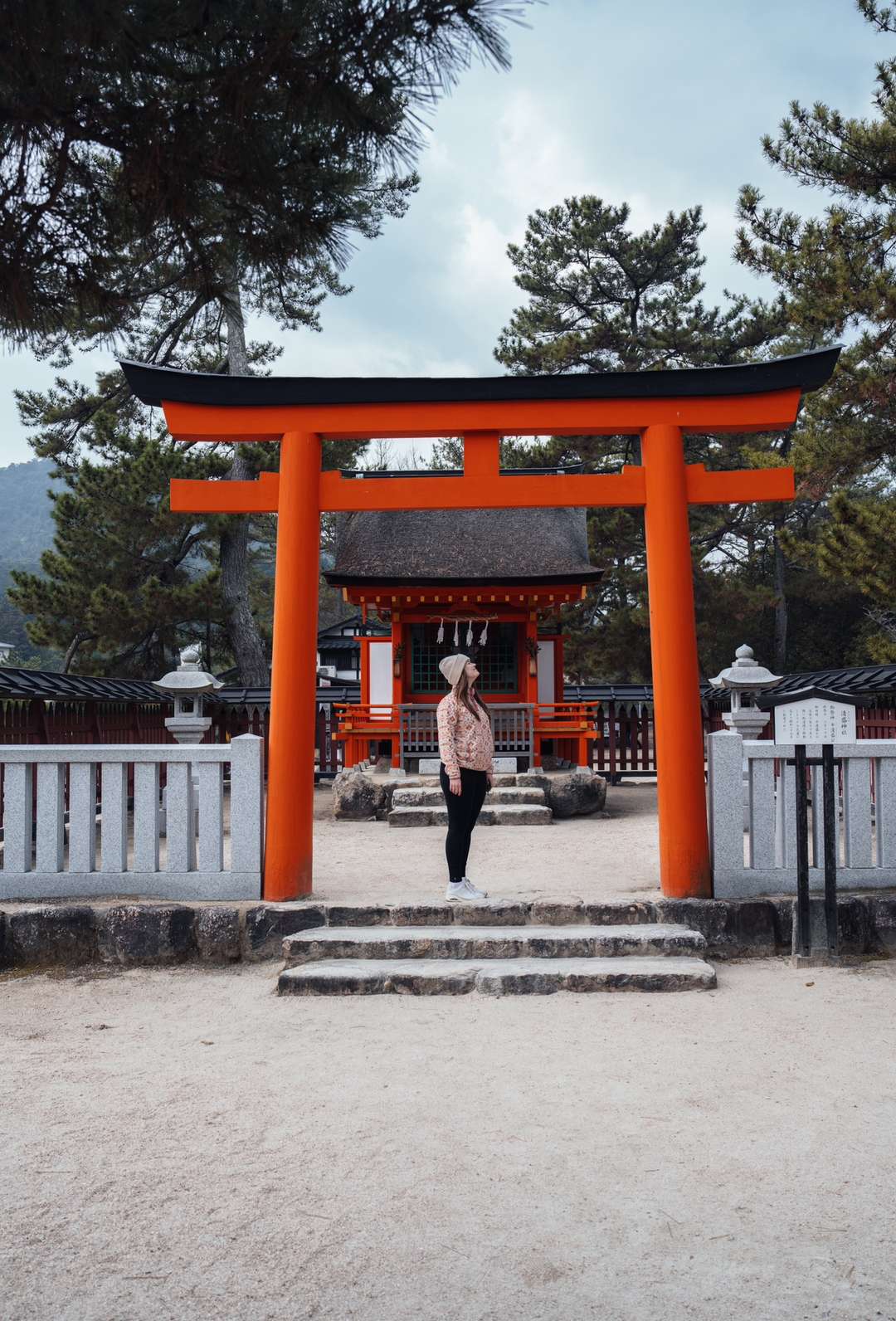
Get the exact geo-position for this spot: Kiyomori Shrine, Miyajima
In search of an unobstructed view of Mt. Fuji
Our last stop before returning to Tokyo was Kawaguchi at the foot of Mt. As the mountain is often obscured by clouds, we plan to spend three days here to increase our chances of seeing Mt Fuji.

Get the exact geo-position for this spot: Fuji framed in Torii, Fujiyoshida
Chureito Pagoda
We were lucky the morning after our arrival and the mountain was clear at sunrise. So we set off on foot to the Chureito Pagoda. This iconic five-story pagoda offers a breathtaking view of Mount Fuji, which rises majestically above the surrounding landscape. The pagoda was built in 1963 and served as a memorial for peace and a place of prayer for the fallen of the Second World War. Today, it is not only a spiritual center, but also one of the most popular tourist attractions in the region, attracting visitors from all over the world to take breathtaking photos.
The ascent to Chureito Pagoda requires climbing 398 steep steps, but the effort is rewarded with a panoramic view of Mount Fuji rising behind the pagoda.
The view is particularly popular during the cherry blossom season in spring, when the pagoda is surrounded by a sea of pink flowers and Mount Fuji forms a picturesque backdrop. We were there a few weeks too early, but the sight of the majestic mountain in combination with the red pagoda is still overwhelming. Unfortunately, after a few hours, some clouds started to appear, so we walked back to the hostel and had a leisurely breakfast.
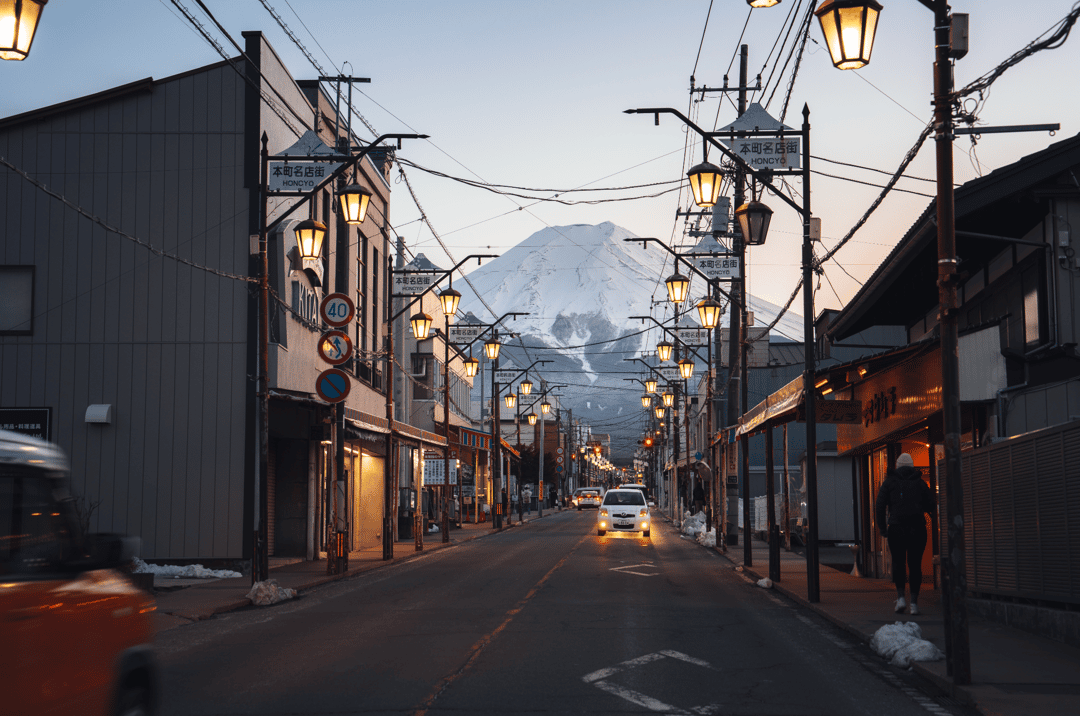
Get the exact geo-position for this spot: Street with view on Mount Fuji, Fujiyoshida
Tenku no Torii
The mountain didn't show its face the next day either, but as the weather was otherwise very nice, we went for a walk around Lake Kawaguchi. On the last day, we were very lucky again and had great weather and a clear view of Mt Fuji all day. We took advantage of this to photograph the sunrise at Tenku no Torii (Gate to Heaven). The Tenku no Torii is a stunning torii gate that sits high above the shores of Lake Kawaguchiko and forms a picturesque backdrop to the majestic Mount Fuji. This torii gate, part of the Arakura Sengen Shrine, is located on a hill above Fujikawaguchiko and provides a picturesque backdrop for photos, especially during the cherry blossom season in spring and autumn when the leaves change colors. But even if we don't have cherry blossoms or autumn colors, the place is beautiful.
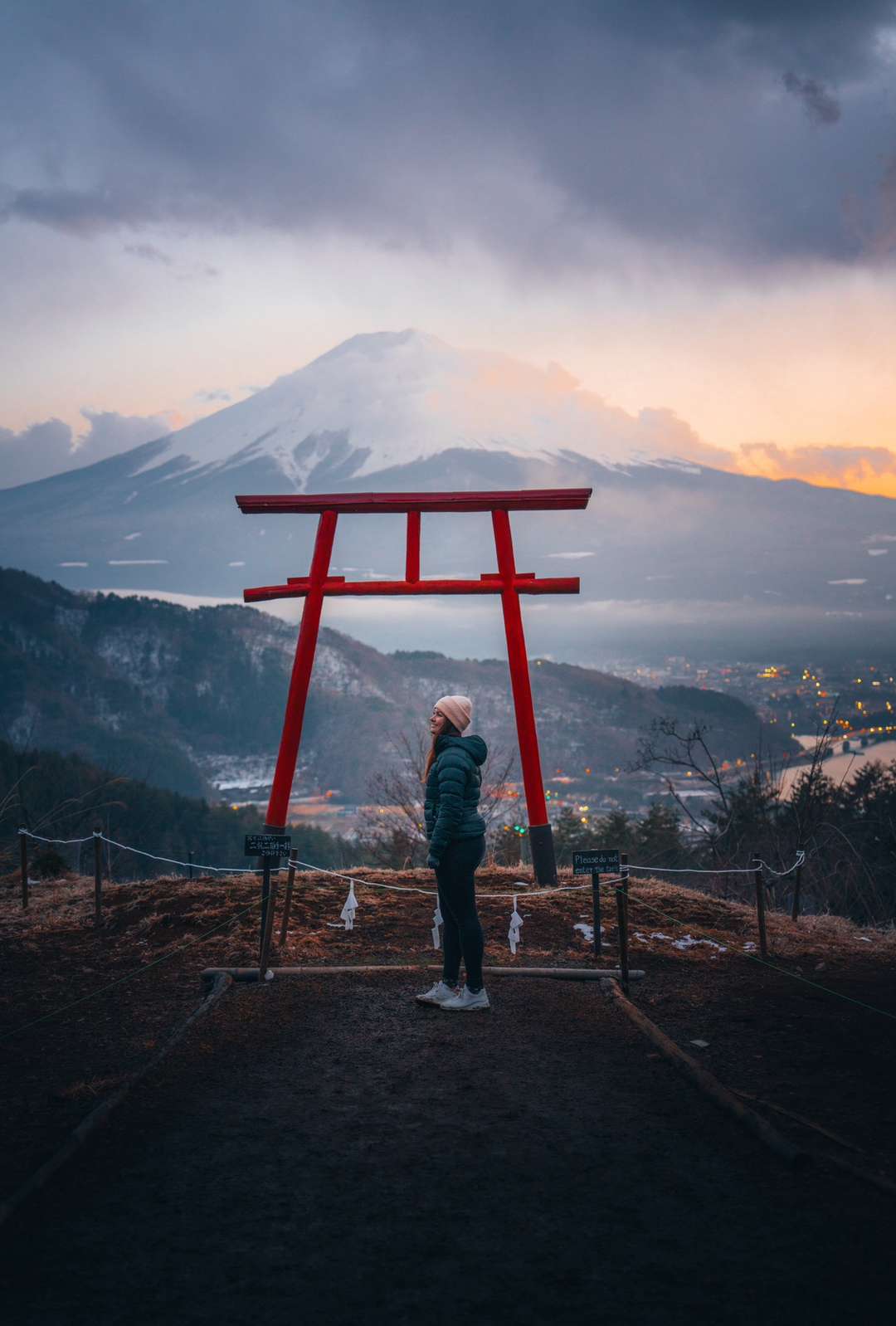
Get the exact geo-position for this spot: Tenku-no Torii
To reach the Tenku no Torii, we have to take a short hike from the base of the hill to the shrine. The path leads through a picturesque forest and offers spectacular views of Lake Kawaguchiko and Mount Fuji-San.
Views of Mt. Fuji
The path from Tenku no Torii to our hostel in Fujiyoshida is about 8 km long, and as the weather is so nice, we decided to walk. There are still a few photo spots along the way that we want to take a look at and photograph. For example, the most famous LAWSON store with Mount Fuji in the background, or a mirrored house façade reflecting Mount Fuji. At Blue Hour, the street in Fujiyoshida with its lanterns and the Fujisan in the background is a great picture.
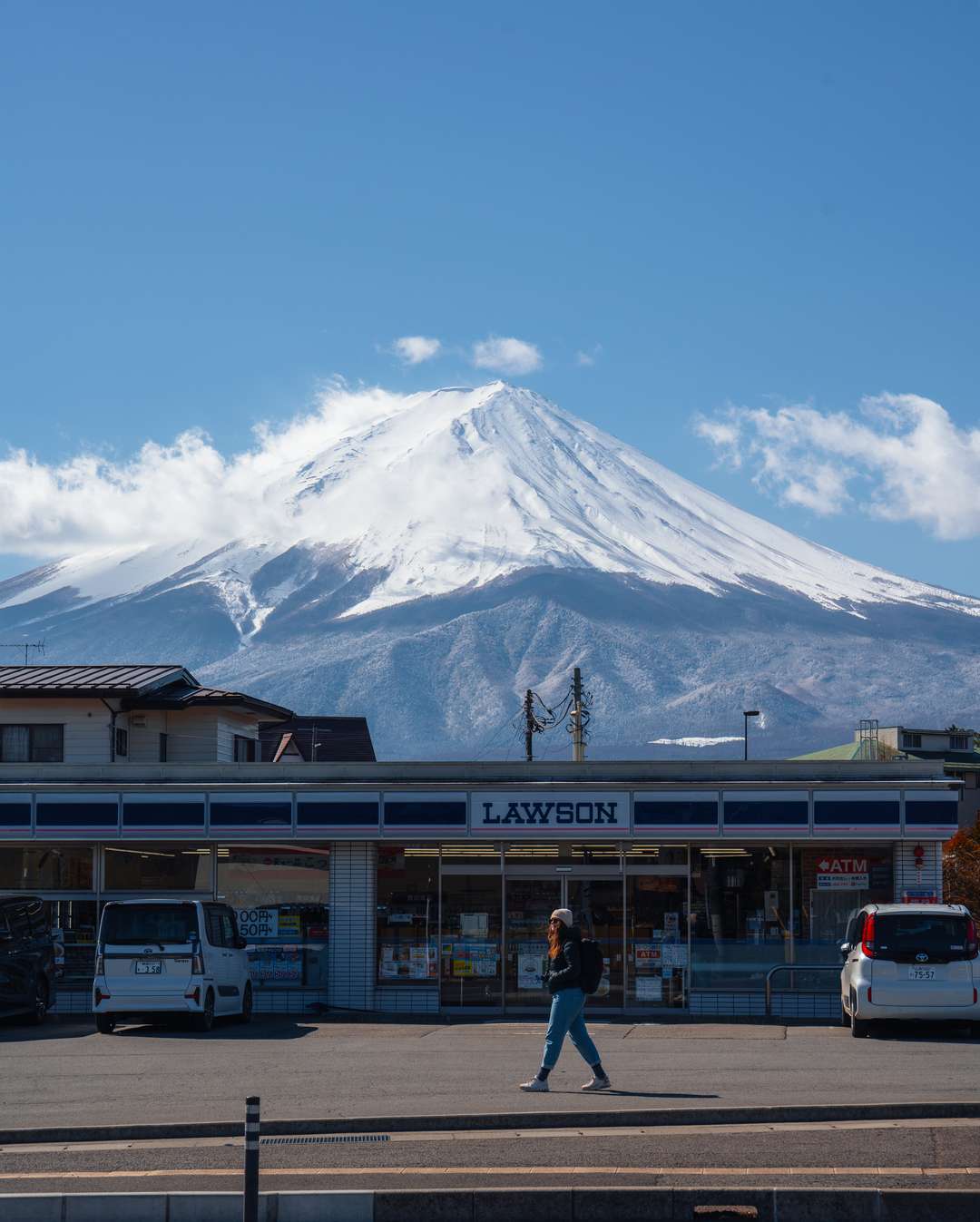
Get the exact geo-position for this spot: Lawson at Mt. Fuji
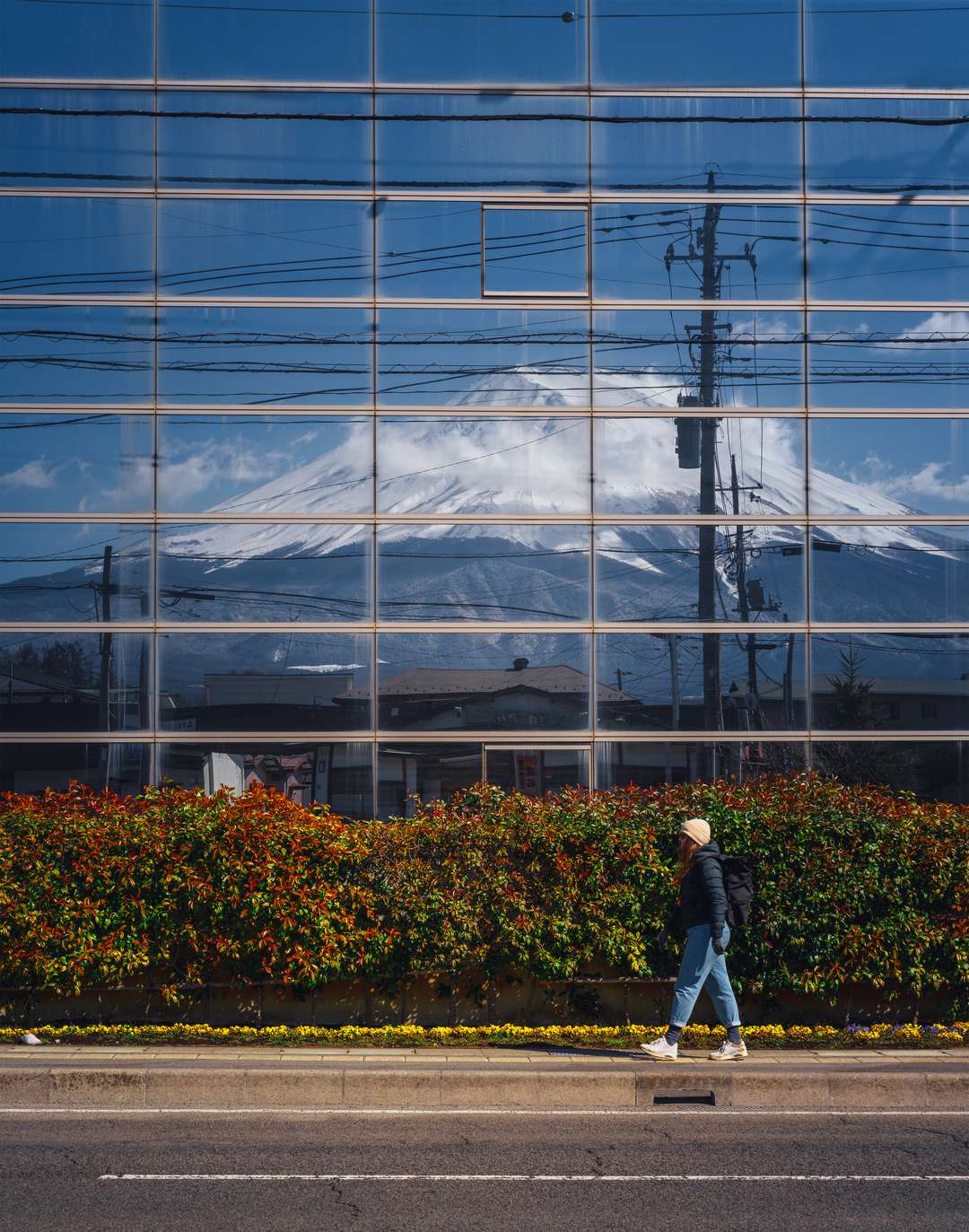
Get the exact geo-position for this spot: Mt. Fuji Mirrow, Fujikawaguchiko
One night in Hakone
Our last destination on our trip to Japan is Motohakone. Motohakone is a small village on the shores of Lake Ashinoko and is located on the southern shore with a magnificent view of Mount Fuji, which often serves as a backdrop for photos. Another famous sight in Motohakone is the Hakone Shrine Gate, which is located on the northern shore of the lake. This picturesque torii gate serves as the gateway to Hakone Shrine and is particularly popular for photos. There was even a real queue at sunset, but we were almost the only ones there at sunrise.

Get the exact geo-position for this spot: Hakone Shrine vs. Mt. Fuji at Lake Ashi
Summary - the entire travel route
We hope this trip gives you some ideas you might combine with your travel plans to discover the amazing experiences Japan has to offer for travelers and photographers.
- Three days in Tokyo to get a first impression, overcome jet lag, and take care of organizational matters
- The snow monkeys in Jigokudani Yaen-Koen Park, where we watched the fascinating macaques relaxing in the hot springs.
- Three days in Kyoto, the ancient capital of Japan, known for its well-preserved temples, shrines, and historic quarters.
- Two days in Nachikatsuura, where we visited the picturesque Kumano Nachisan shrines and explored the natural beauty of the region
- Three days in Osaka, a vibrant city with a rich culinary scene and a fascinating mix of old and new.
- Three days in Hiroshima, where we visited the historic island of Miyajima with its famous floating torii gate
- Three days in Kawaguchi at the foot of Mt. Fuji, where we experienced the majestic beauty of Japan's highest mountain
- One night in Hakone to get another view of Mt. Fuji and photograph the Hakone Shrine
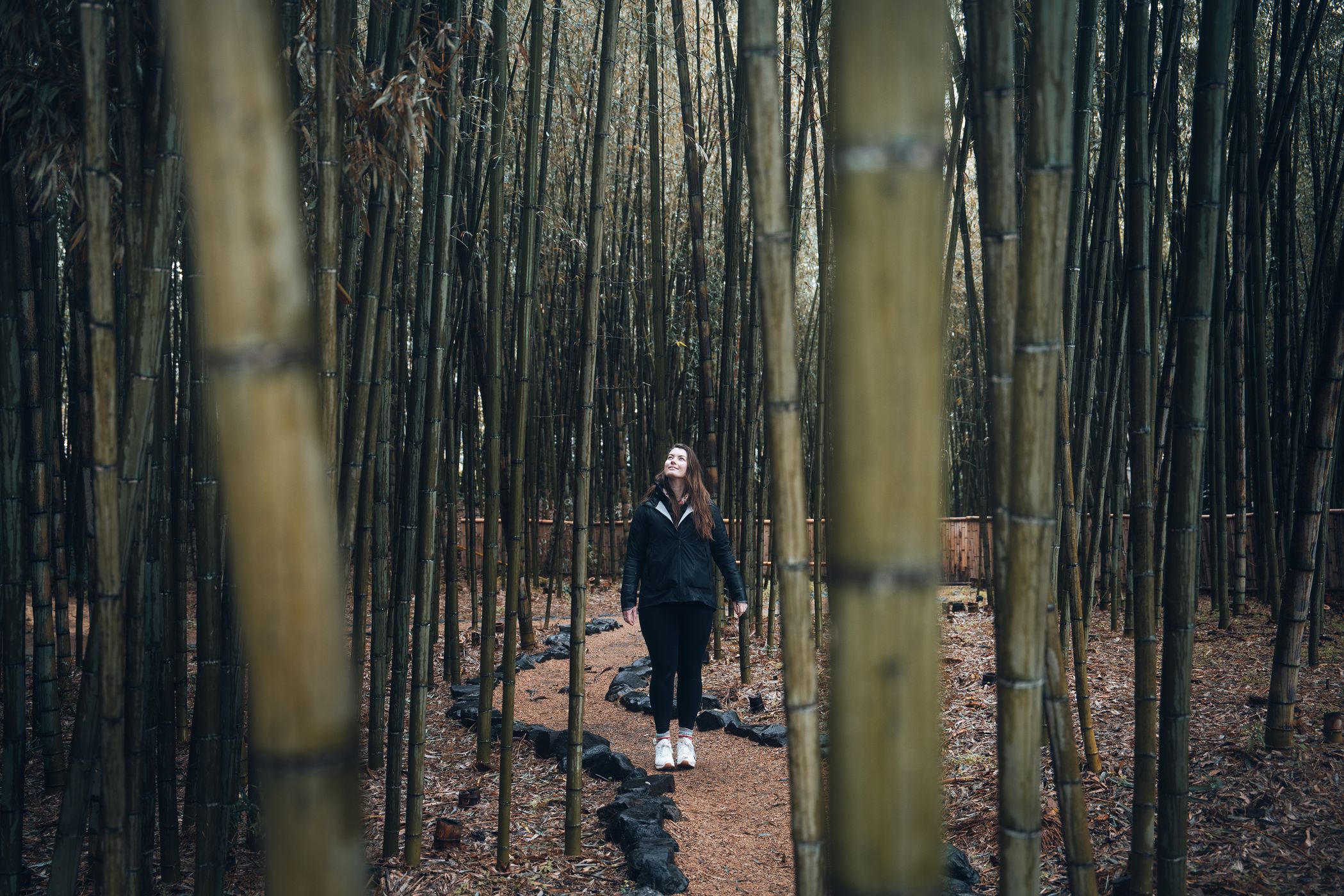




Comments (8)